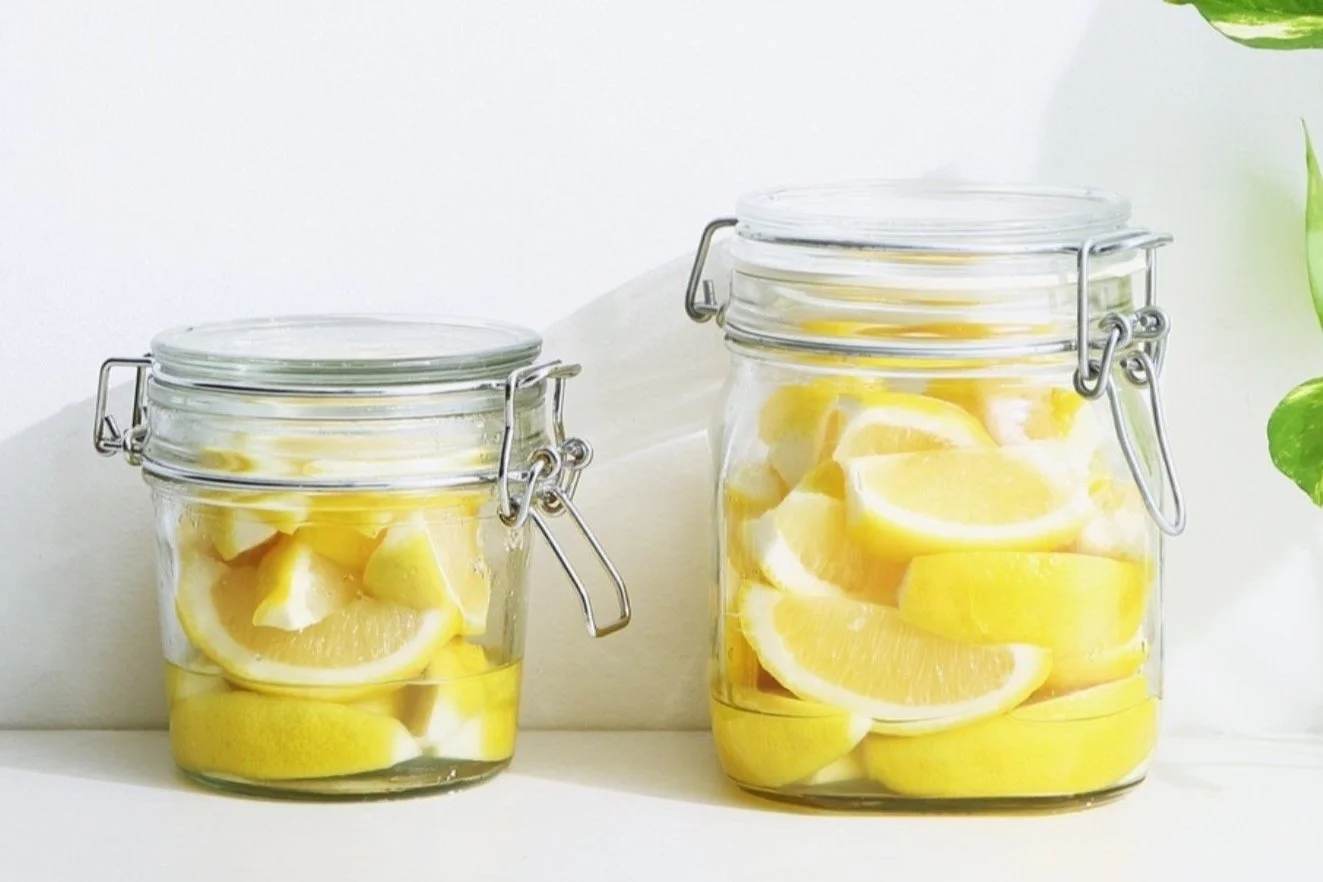Preserved Lemons
Ingredients
Lemons! About 8-10 good-sized, unwaxed lemons. Organic if you can, the flavour's just better.
Coarse Sea Salt: A generous amount, think about half a cup, maybe a bit more.
Fresh Lemon Juice: From a few extra lemons, enough to cover.
Optional Extras
A few bay leaves.
A cinnamon stick, broken in half.
A few peppercorns, black or pink.
A star anise.
Method:
Prep the Lemons: Give those lemons a good scrub. We want them squeaky clean. Then, slice them almost all the way through, lengthwise, into quarters, but leaving them attached at the base. Imagine them as little lemon flowers, just starting to bloom.
Salt it Up: Now, here's the magic. Open up each lemon and generously pack coarse sea salt into the flesh. Don't be shy! We want them well and truly salted. Once you've salted them, push them back together into their original shape.
Layer 'em In: Grab a clean, sterilised jar. A wide-mouth jar is ideal. Start layering the lemons into the jar, pressing them down firmly as you go. You want to squeeze them in tight, releasing their juices. As you layer, scatter in your optional extras – bay leaves, cinnamon, peppercorns, star anise – if you're using them. This is where you can get creative and add your own personal touch.
Juice it! Once all the lemons are snug in the jar, pour over fresh lemon juice until the lemons are completely submerged. You might need to squeeze a few extra lemons to get enough juice.
Seal and Wait: Seal the jar tightly. Now, here's the tricky part – patience. Leave the jar in a cool, dark place for at least 4 weeks, preferably longer. Give it a shake every few days to redistribute the salt and juice.
Ready to Go: After a few weeks, the lemons will be soft and the peel will have mellowed. To use them, rinse off the excess salt and scrape away the pulp. You can then finely chop the peel and add it to tagines, stews, dressings, or even toss it through pasta. The flavour is intense, so a little goes a long way.
Tobie's Tips:
Don't skimp on the salt! It's what preserves the lemons and gives them that unique flavour.
Use a good quality sea salt. Table salt is too fine and won't work as well.
The longer you preserve the lemons, the softer and more mellow the peel will become.
If you see a white film on the top of the liquid, don't panic. It's just kahm yeast, and it's harmless. Just scrape it off.
These preserved lemons are a fantastic gift for any foodie friend.
There you have it! My simple, yet sensational, preserved lemon recipe. Get in the kitchen, get your hands dirty, and enjoy the taste of sunshine all year round. Cheers!


